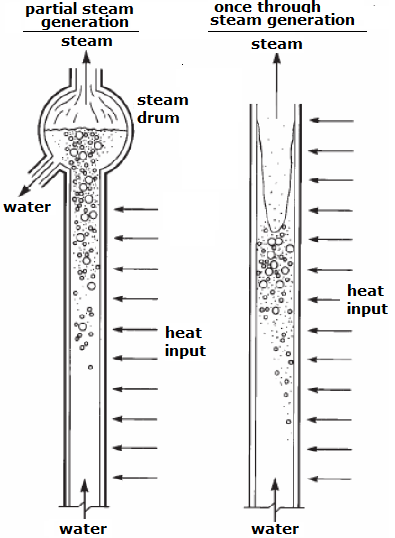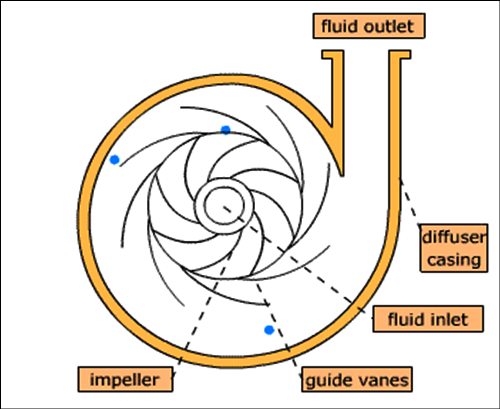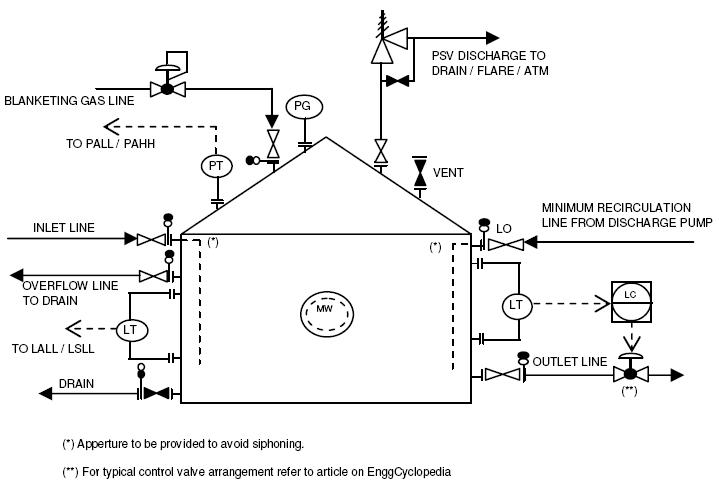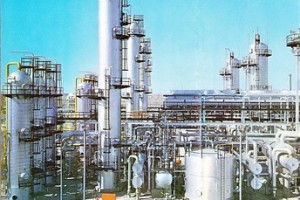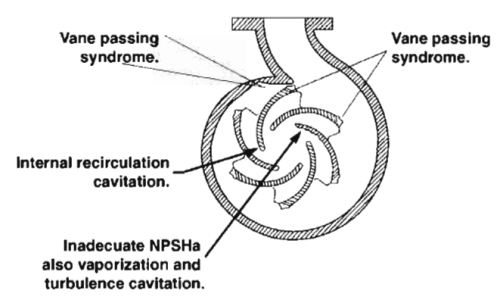Steam generation is t familiar process of boiling water to make steam. Thermodynamically, the heat energy used results in a change of phase from liquid to gaseous state, i.e. from water to steam. A steam generating system has to provide a continuous and uninterrupted heat source for this conversion.
Steam generation
The simplest steam generation equipment is a kettle type boiler for heating a specific quantity of water. As a result of the applied heat, the water temperature increases. Eventually, for a given presssure, the boiling (saturation) temperature is reached and bubbles begin to form. As heat continues to be applied, the temperature remains unchanged and steam begins to be created, escaping the water surface. At this point all the heat energy coming into the system is used for vaporization of water and not for increase in temperature. If the steam is continuously removed out of the vessel, the temperature will remain unaltered until all the water has evaporated. In order to guarantee the continuous conversion of water to steam, all we have to do is provide a regulated supply of water to equal the amount of steam being produced and removed out of the vessel.
For a given pressure, steam heated above the saturation temperature is called superheated steam, whereas water cooled below the saturation temperature is called subcooled water. If the boiling water is a closed system, then after converting all the water to steam, new heat energy coming into the system is used for increasing steam temperature i.e. superheating the saturated steam.
High pressure steam generation
Technical and economic considerations indicate that the most efficient and economic way of producing high pressure (HP) steam is to heat relatively small diameter tubes containing a continuous flow of water.
Two inherently different boiling systems are used in order to accomplish this task:
- The first system uses a steam drum or a fixed steam-water separation point and
- The second system that does not use a steam drum, referred to as once-through steam generator (OTSG).
Steam Drum
Perhaps the most widely used steam generation system is a steam drum. In this system, the drum serves as the point of separation of steam from water. Subcooled water enters the tube to which heat is applied. As the water flows across the tube, it is heated to the boiling point. Consequently, bubbles are formed and wet steam is generated. In most boilers, a steam-water mixture leaves the tube and enters the steam drum. The remaining water is then mixed with the makeup (replacement) water, returned back to the heated tube and the process is repeated.
Once Through Steam Generator (OTSG)
Without the use of a steam drum, subcooled water also enters the heated tube and gets converted to steam along the flow path (length of tube). The point where water turns into steam depends on the water flow rate (boiler load) and heat input rate. With close control of both flow rate and heat input rate, we can make sure that all of the water is evaporated withing the tube and only steam leaves the tube. Therefore, there is no need for having a steam drum.
Figure-1 presents a schematic view of steam generators with steam drum and without drum (OTSG).
At very high pressures, a point is reached where water no longer exhibits boiling behavior. Above this pressure (approximately 221 bar or 3200 psi), the water temperature keeps increasing with added heat. Boilers designed to operate above this critical pressure are referred to as supercritical boilers. Drums are no longer required at supercritical boilers: these boilers operate effectively n the once-through principle.
